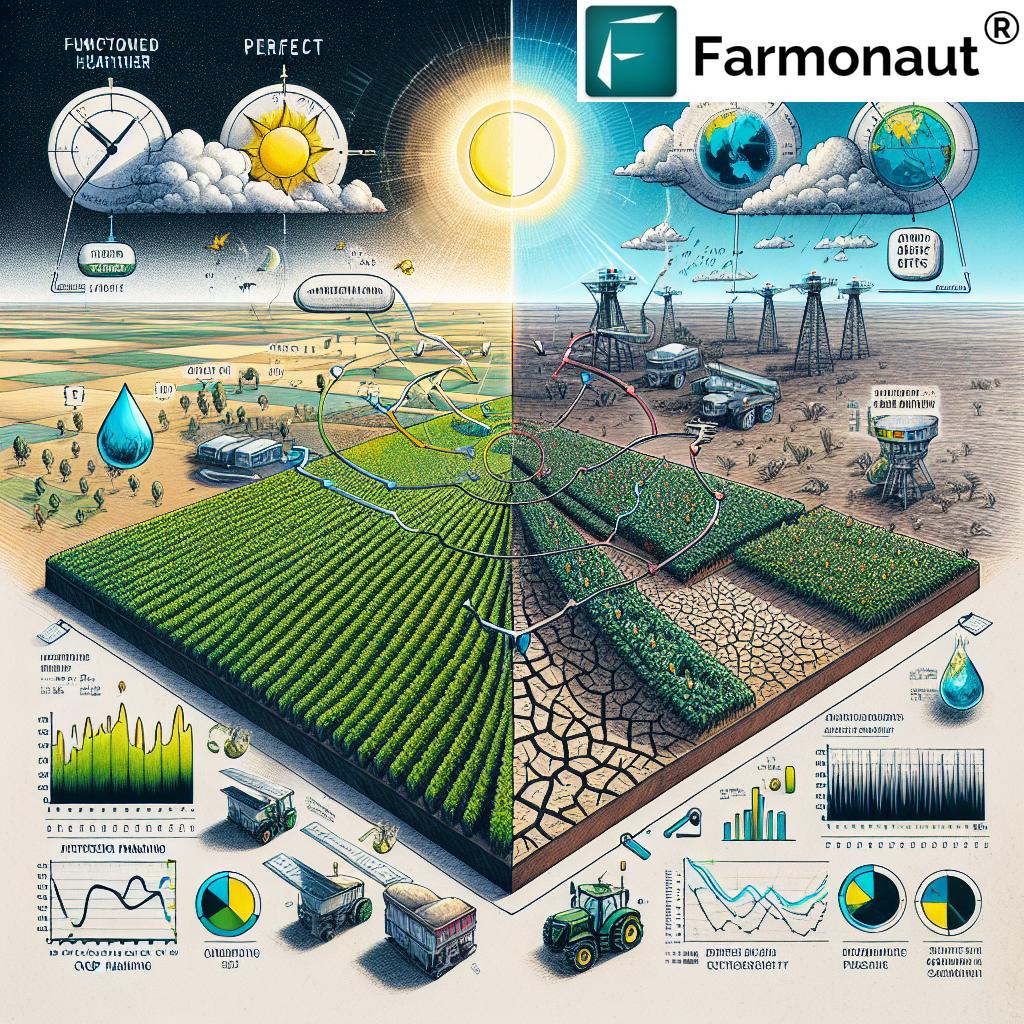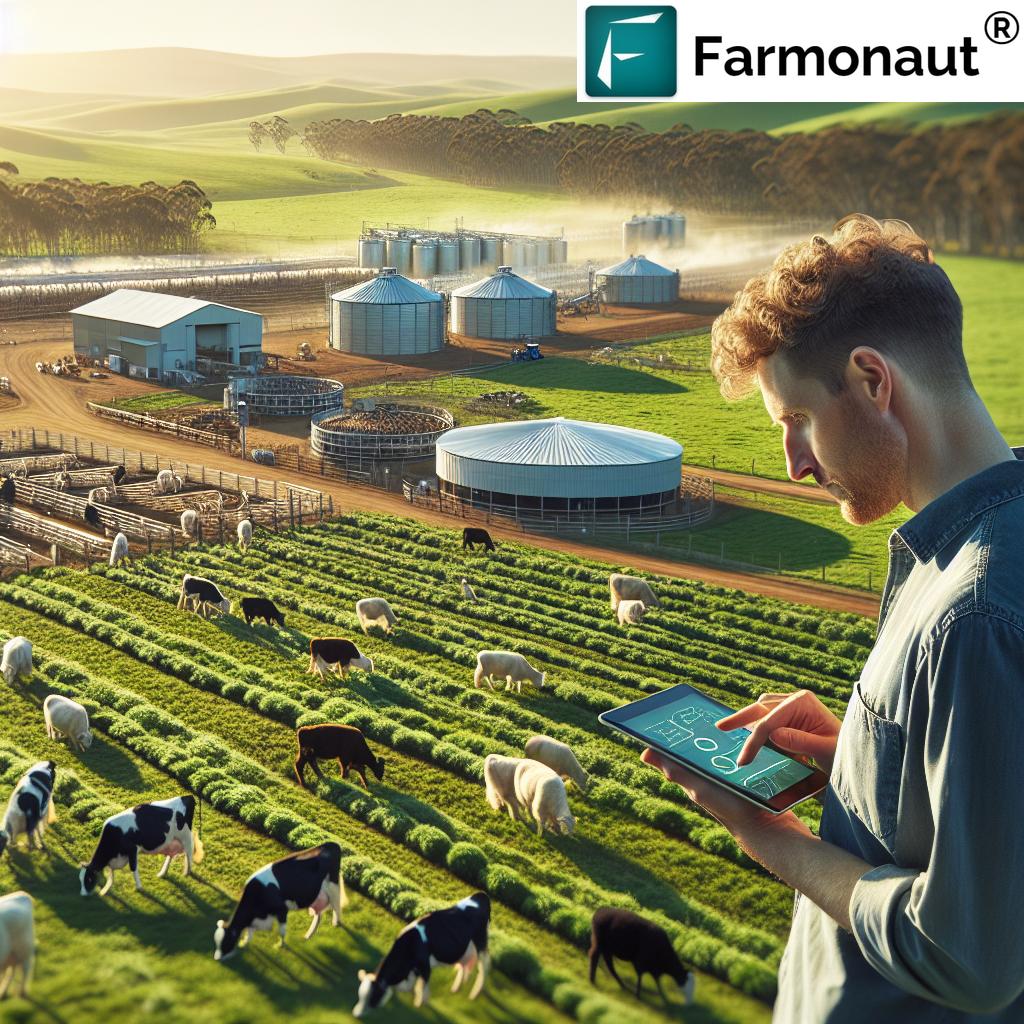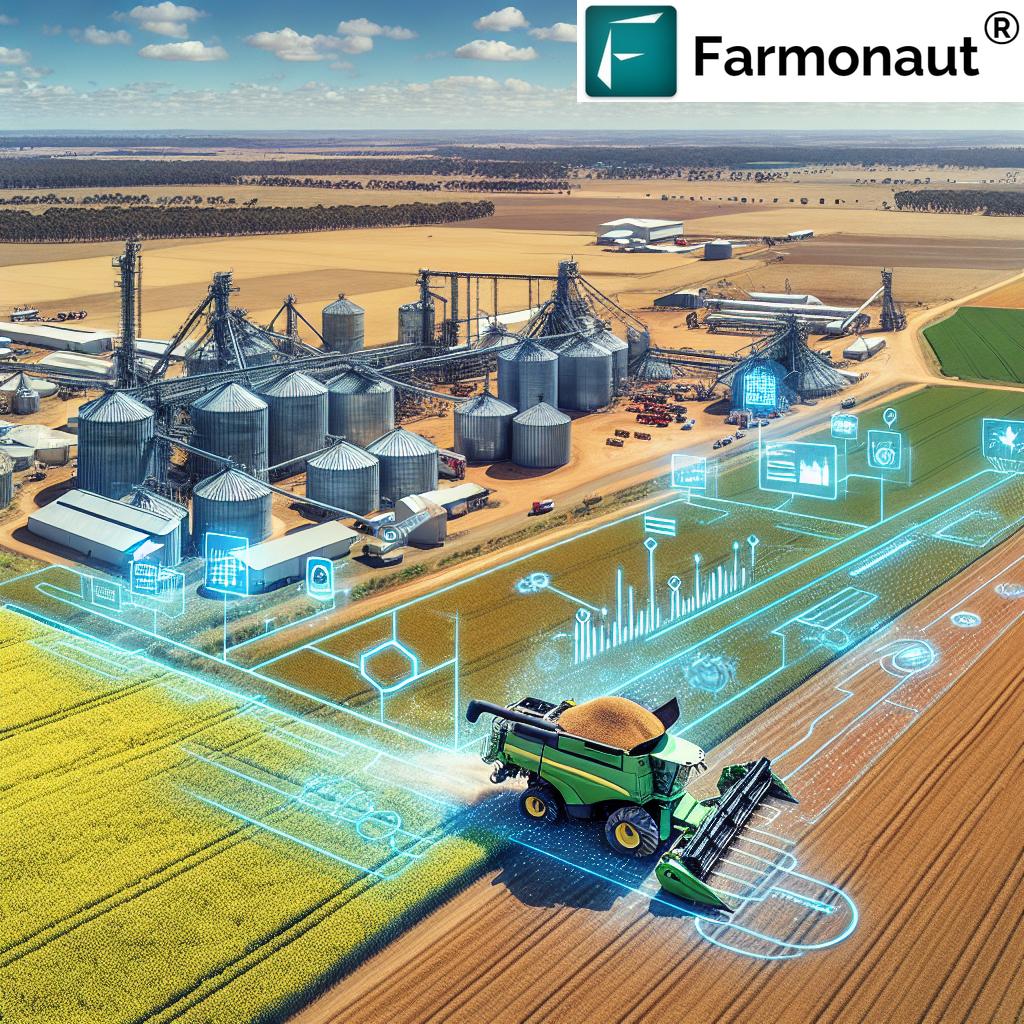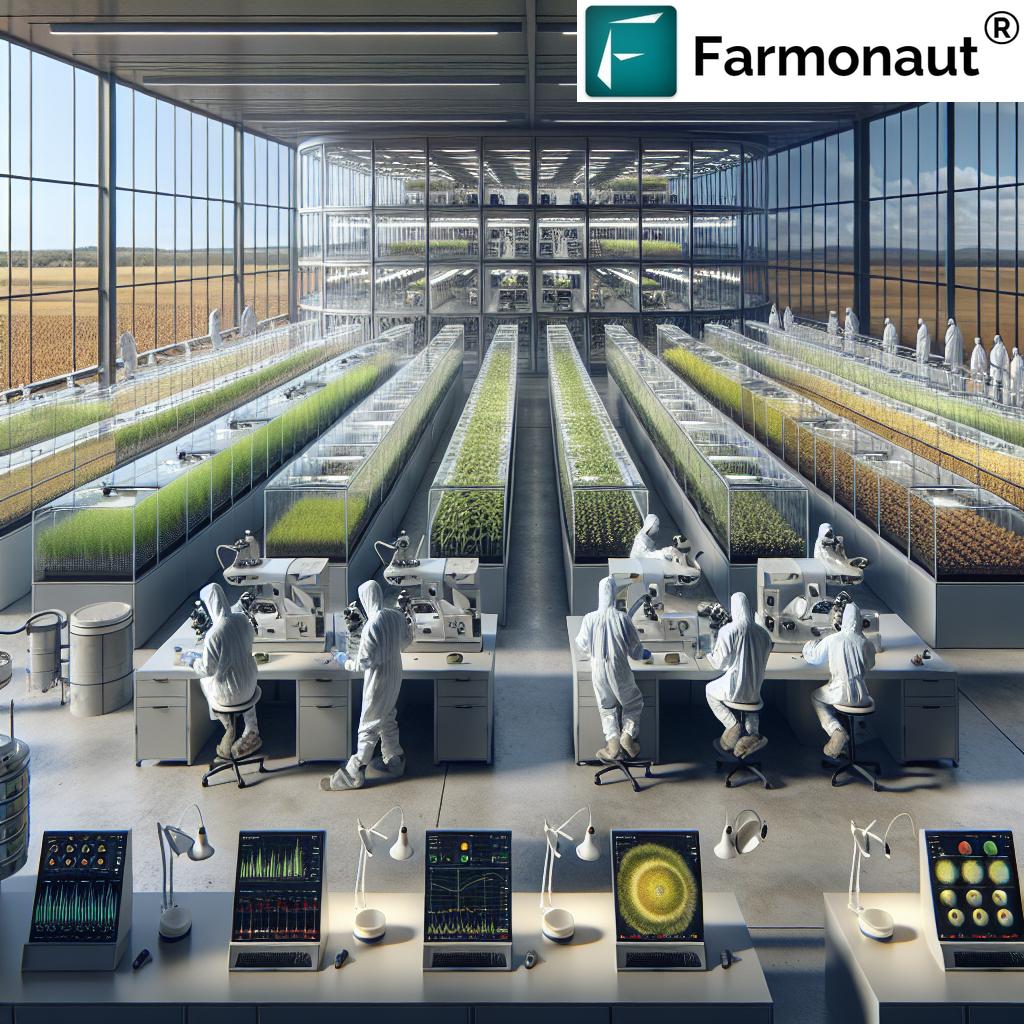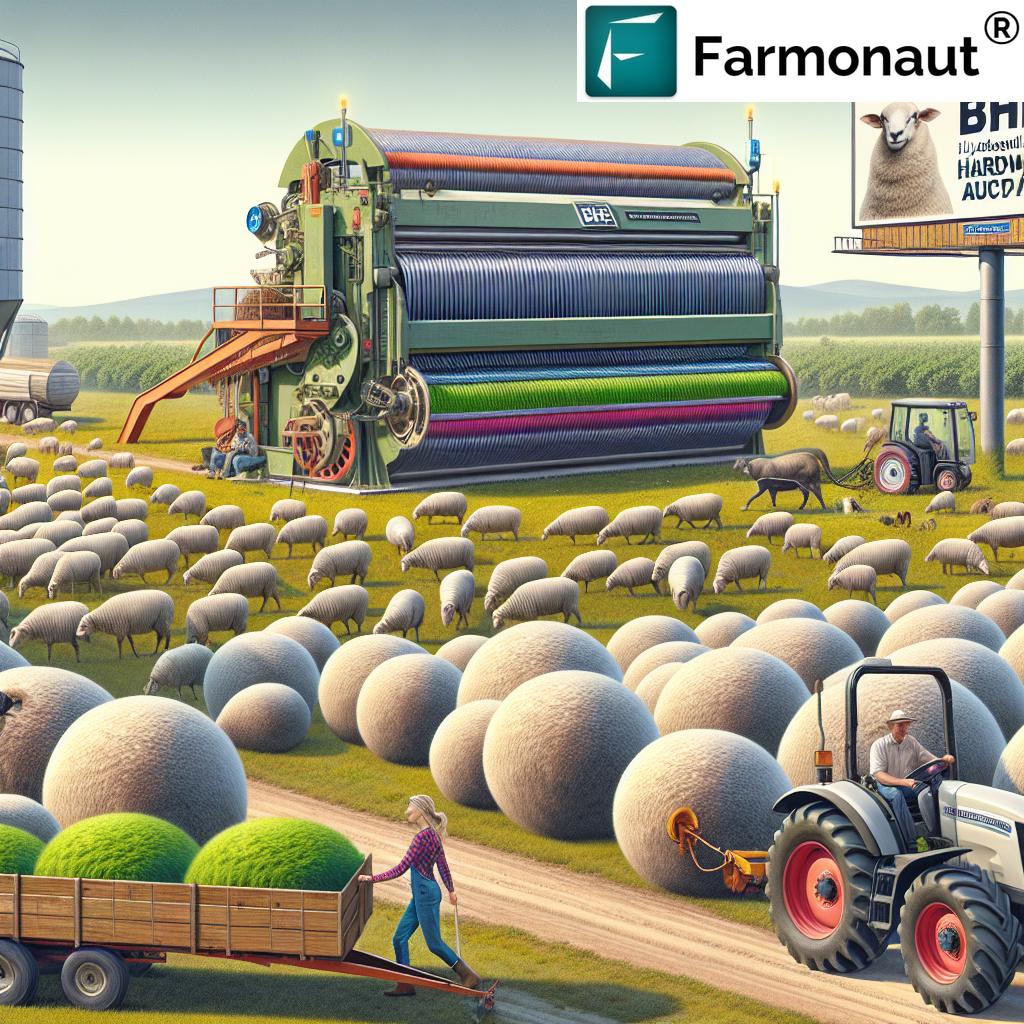Unlocking Sustainable Agriculture: Key Insights from Australia’s 2024 Grain Industry Survey
“68% of Australian grain farmers rate their land’s environmental condition as excellent, despite facing pressing challenges.”

In the ever-evolving landscape of Australian agriculture, the latest annual survey on sustainable agriculture practices has unveiled a wealth of insights into the challenges and opportunities facing our grain industry. As we delve into the key findings of the 2024 Grain Industry Survey, we’ll explore how these results are shaping the future of farming and driving agricultural innovation across the nation.
The State of Australian Grain Farming in 2024
The Australian grain industry stands at a crossroads, balancing pressing challenges with remarkable resilience. Our survey results paint a picture of an industry grappling with significant hurdles while maintaining a largely positive outlook. Let’s break down the key areas of focus:
- Financial Pressures: Input costs and market pricing volatility top the list of concerns for growers.
- Labor Shortages: The availability of skilled workforce remains a significant challenge.
- Environmental Stewardship: Despite challenges, 68% of farmers rate their land’s environmental condition as excellent.
- Mental Health: There’s a growing emphasis on supporting the wellbeing of our rural communities.
- Technological Adoption: Agricultural technology innovations are increasingly crucial in addressing industry challenges.
As we navigate these complex issues, it’s clear that sustainable agriculture practices are more important than ever. The survey highlights a slight decline in financial health, emphasizing the need for effective farm input cost management strategies. However, the industry’s commitment to sustainability and innovation offers a beacon of hope for the future.
Pressing Challenges Facing Grain Farm Businesses
The 2024 Grain Industry Survey has identified several key challenges that are putting pressure on grain farm businesses across Australia. Understanding these issues is crucial for developing targeted solutions and policies to support our farmers.
1. Skyrocketing Input Costs
One of the most significant concerns for growers is the rising cost of inputs. Fertilizers, pesticides, and fuel prices have seen substantial increases, squeezing profit margins for many farm businesses. This trend underscores the importance of efficient resource management and the adoption of precision agriculture techniques to optimize input use.
2. Market Pricing Volatility
The unpredictable nature of grain markets continues to pose challenges for farmers. Fluctuations in global supply and demand, influenced by factors such as geopolitical tensions and climate events, create uncertainty in pricing. This volatility makes it difficult for growers to plan and budget effectively, highlighting the need for robust risk management strategies.
3. Labor Shortages
The agricultural labor shortage remains a persistent issue for the grain industry. Finding skilled workers, particularly during peak seasons, is becoming increasingly difficult. This shortage not only affects day-to-day operations but also impacts the industry’s ability to adopt new technologies and practices that require specialized knowledge.
“The 2024 Grain Industry Survey reveals a slight decline in financial health, emphasizing the need for better input cost management.”
4. Climate Variability and Extreme Weather Events
While Australian farmers are no strangers to challenging weather conditions, the increasing frequency and severity of extreme events are putting additional strain on grain production. Droughts, floods, and heatwaves not only affect crop yields but also contribute to soil degradation and water scarcity issues.
5. Biosecurity Concerns
The survey highlights growing priorities in biosecurity, reflecting the industry’s awareness of the potential threats posed by pests and diseases. Maintaining robust biosecurity measures is crucial for protecting crop health and ensuring access to international markets.
To address these challenges, we’re seeing a growing interest in innovative solutions and sustainable agriculture practices. Let’s explore how technology and data-driven approaches are helping farmers navigate these complex issues.
Embracing Agricultural Technology Innovations
In the face of these challenges, agricultural technology innovations are emerging as key tools for improving industry sustainability and profitability. Precision agriculture solutions, like those offered by Farmonaut, are playing an increasingly vital role in helping farmers make data-driven decisions and optimize their operations.
Let’s explore some of the key technological advancements that are shaping the future of grain farming in Australia:
1. Satellite-Based Crop Monitoring
Advanced satellite imagery and remote sensing technologies are revolutionizing the way farmers monitor their crops. These tools provide real-time insights into crop health, soil moisture levels, and potential pest or disease outbreaks. By leveraging this data, farmers can make more informed decisions about irrigation, fertilizer application, and pest management, leading to optimized resource use and improved yields.
Farmonaut’s satellite-based crop health monitoring system is an excellent example of how this technology is being applied in practice. By providing farmers with access to multispectral satellite images, Farmonaut enables growers to track vegetation health indices like NDVI (Normalized Difference Vegetation Index) across their fields. This information is crucial for identifying areas of stress or underperformance early on, allowing for targeted interventions.
2. AI-Powered Advisory Systems
Artificial Intelligence (AI) is transforming agricultural decision-making processes. AI-powered advisory systems analyze vast amounts of data – including historical yield information, weather patterns, and market trends – to provide personalized recommendations for farm management.
The Jeevn AI Advisory System, developed by Farmonaut, exemplifies this technology. By combining satellite data with other inputs, Jeevn AI offers real-time insights and expert crop management strategies tailored to each farm’s unique conditions. This level of personalization helps farmers optimize their practices for maximum efficiency and profitability.
3. Precision Application Technologies
Precision agriculture tools, such as variable-rate application systems, are helping farmers apply inputs like fertilizers and pesticides with greater accuracy. These technologies allow for site-specific management, ensuring that resources are used efficiently and minimizing environmental impact.
By integrating data from satellite monitoring and soil testing, farmers can create detailed prescription maps for variable-rate applications. This approach not only reduces input costs but also promotes more sustainable farming practices by minimizing excess chemical use.
4. Blockchain for Supply Chain Transparency
Blockchain technology is gaining traction in the grain industry for its potential to enhance supply chain transparency and traceability. By creating an immutable record of each step in the production and distribution process, blockchain can help build trust between farmers, buyers, and consumers.
Farmonaut’s blockchain-based product traceability solution is at the forefront of this innovation. By enabling transparent tracking of grain from farm to consumer, this technology helps ensure food safety, reduce fraud, and potentially open up new premium markets for sustainably produced grains.
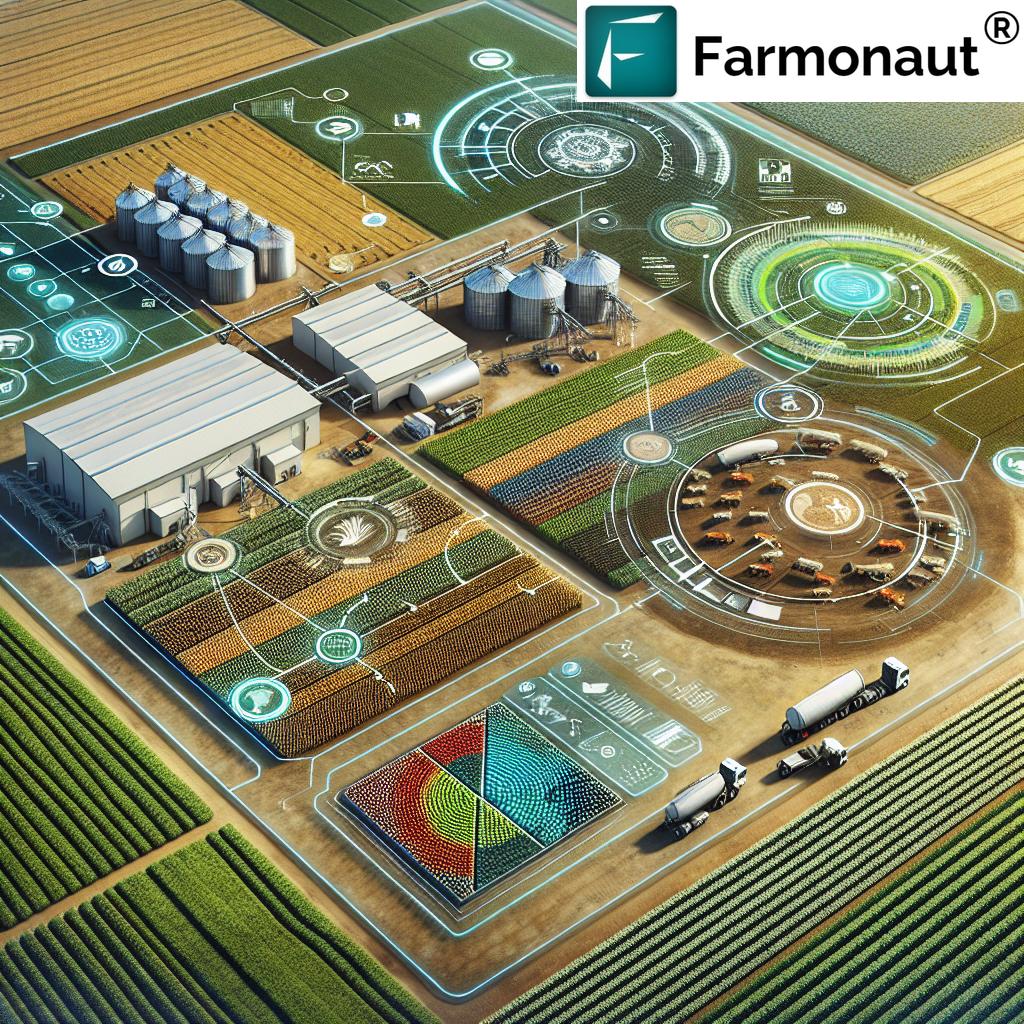
5. Automated Farm Equipment
The development of autonomous tractors, drones, and other automated farm equipment is helping address labor shortages while improving operational efficiency. These technologies can perform tasks such as planting, spraying, and harvesting with high precision, reducing the need for manual labor and minimizing human error.
While the initial investment in automated equipment can be significant, the long-term benefits in terms of labor savings and increased productivity make it an attractive option for many grain farmers.
Climate-Smart Agriculture: A Path to Sustainability
As we grapple with the challenges posed by climate change, the concept of climate-smart agriculture is gaining prominence in the Australian grain industry. This approach aims to increase productivity and resilience while reducing greenhouse gas emissions and adapting to changing climate conditions.
Key aspects of climate-smart agriculture in grain farming include:
- Conservation Tillage: Minimizing soil disturbance to improve soil health and carbon sequestration.
- Crop Rotation and Diversification: Enhancing soil fertility and reducing pest pressures.
- Water-Efficient Irrigation Systems: Optimizing water use through technologies like drip irrigation and soil moisture sensors.
- Climate-Resilient Crop Varieties: Developing and adopting grain varieties that can withstand heat, drought, and other climate-related stresses.
- Precision Nutrient Management: Using data-driven approaches to optimize fertilizer application and reduce emissions.
Farmonaut’s solutions play a crucial role in supporting climate-smart agriculture practices. The platform’s carbon footprinting feature helps agribusinesses monitor and reduce their environmental impact, providing real-time data on emissions. This information is invaluable for farmers looking to implement more sustainable practices and potentially participate in carbon credit schemes.
Optimizing the Grain Supply Chain
Efficient supply chain management is crucial for improving the overall sustainability and profitability of the grain industry. The 2024 Grain Industry Survey highlights several areas where optimization efforts are focused:
1. Improving Logistics and Transportation
Reducing freight costs and improving transportation efficiency are key priorities for the industry. Technology solutions that optimize route planning and enable real-time tracking of grain shipments are helping to streamline logistics operations.
Farmonaut’s fleet and resource management tools contribute to this effort by enabling agribusinesses to manage their logistics more efficiently. By optimizing vehicle usage and improving overall management of agricultural machinery, these tools help reduce operational costs and minimize the environmental impact of transportation.
2. Enhancing Storage and Handling Facilities
Investments in modern grain storage and handling facilities are crucial for maintaining grain quality and reducing post-harvest losses. Advanced monitoring systems that track temperature, humidity, and pest activity in storage facilities help ensure that grain remains in optimal condition from harvest to market.
3. Leveraging Data for Market Insights
Access to timely and accurate market data is essential for making informed decisions about when and where to sell grain. Digital platforms that aggregate market information and provide price forecasts are becoming increasingly valuable tools for grain farmers and traders.
4. Blockchain for Traceability and Transparency
As mentioned earlier, blockchain technology is revolutionizing supply chain transparency in the grain industry. By providing a secure and transparent record of grain movement from farm to consumer, blockchain solutions help build trust and potentially open up new premium markets for sustainably produced grains.
Supporting Farmer Mental Health and Wellbeing
The 2024 Grain Industry Survey highlights a growing recognition of the importance of mental health support for farmers. The challenges faced by the agricultural community, including financial pressures, climate variability, and isolation, can take a significant toll on mental wellbeing.
Initiatives to address this issue include:
- Expanding Access to Mental Health Services: Improving availability of counseling and support services in rural areas.
- Peer Support Programs: Connecting farmers with others who understand their unique challenges.
- Mental Health Education: Raising awareness and reducing stigma around mental health issues in rural communities.
- Financial Counseling: Providing support to help farmers navigate financial stresses and plan for the future.
While technology solutions like Farmonaut can’t directly address mental health issues, they can help alleviate some of the stressors faced by farmers. By providing data-driven insights and tools for better decision-making, these platforms can help reduce uncertainty and improve farm management, potentially easing some of the pressures that contribute to mental health challenges.
Farm Safety: A Growing Priority
The survey also highlights an increased focus on farm safety as a key priority for the grain industry. With the introduction of new technologies and changing work practices, ensuring the safety of farm workers remains a critical concern.
Key areas of focus for farm safety include:
- Equipment Safety: Ensuring proper maintenance and safe operation of farm machinery.
- Chemical Handling: Implementing best practices for the safe use and storage of agricultural chemicals.
- Training and Education: Providing ongoing safety training for farm workers and family members.
- Emergency Preparedness: Developing and practicing emergency response plans for various scenarios.
Technology is playing an increasingly important role in enhancing farm safety. For example, Farmonaut’s satellite monitoring capabilities can help farmers identify potential hazards in their fields, such as areas prone to waterlogging or erosion. Additionally, the platform’s spray drift management features can help minimize the risks associated with pesticide application by providing real-time weather data and drift risk assessments.
The Role of Women in Australian Agriculture
The 2024 Grain Industry Survey also sheds light on the growing role of women in the Australian agricultural sector. Women are increasingly taking on leadership positions in farm businesses, agricultural organizations, and research institutions, bringing diverse perspectives and skills to the industry.
Key trends include:
- Increasing Farm Ownership: More women are becoming primary farm owners and operators.
- Leadership in Agricultural Innovation: Women are at the forefront of adopting and promoting new agricultural technologies and sustainable practices.
- Diversification of Farm Businesses: Women are often driving efforts to diversify farm income streams, such as through agritourism or value-added products.
- Advocacy and Policy Development: Women are playing crucial roles in shaping agricultural policy and advocating for the interests of rural communities.
As the grain industry continues to evolve, the contributions of women will be crucial in driving innovation, sustainability, and resilience in the sector.
Key Challenges and Priorities in Australian Grain Farming 2024
| Category | Challenges | Priorities/Opportunities |
|---|---|---|
| Financial |
• High input costs • Market pricing volatility • Declining financial health |
• Farm input cost management • Risk management strategies • Diversification of income streams |
| Environmental |
• Climate variability • Soil degradation • Water scarcity |
• Climate-smart agriculture • Soil health improvement • Water-efficient irrigation systems |
| Labor |
• Skilled workforce shortage • Seasonal labor challenges |
• Automation and robotics • Training and skill development • Labor-sharing initiatives |
| Technology |
• High initial investment costs • Technological literacy |
• Precision agriculture adoption • Data-driven decision making • Integration of AI and machine learning |
| Health & Safety |
• Mental health pressures • Farm accident risks |
• Mental health support programs • Farm safety initiatives • Work-life balance strategies |
The Future of Australian Grain Farming
As we look to the future of grain farming in Australia, it’s clear that the industry is at a pivotal point. The challenges we face are significant, but so too are the opportunities for innovation and growth. By embracing sustainable agriculture practices, leveraging cutting-edge technology, and fostering a resilient and inclusive farming community, we can build a stronger, more prosperous grain industry.
Key areas that will shape the future of Australian grain farming include:
- Continued Technological Adoption: The integration of AI, IoT, and big data analytics will drive further efficiencies and insights in farm management.
- Climate Adaptation: Developing more resilient farming systems and crops that can thrive in changing climate conditions.
- Circular Economy Approaches: Exploring ways to reduce waste and create value from agricultural by-products.
- Strengthening Rural Communities: Investing in infrastructure, education, and services to support thriving rural communities.
- Global Market Integration: Leveraging Australia’s reputation for quality to expand into new international markets.
Solutions like Farmonaut will continue to play a crucial role in this future, providing farmers with the tools and insights they need to navigate an increasingly complex agricultural landscape. By making precision agriculture more accessible and affordable, these platforms are democratizing access to advanced farming techniques and helping to level the playing field for farmers of all sizes.
Conclusion
The 2024 Grain Industry Survey provides valuable insights into the current state of Australian grain farming and the path forward. While challenges such as input costs, market volatility, and climate change continue to test the resilience of our farming communities, there is much reason for optimism.
The industry’s commitment to sustainability, coupled with the rapid adoption of innovative technologies, positions Australian grain farmers to not only overcome these challenges but to thrive in the years ahead. By embracing sustainable agriculture practices, leveraging data-driven insights, and fostering a culture of innovation, we can build a more resilient, profitable, and environmentally responsible grain industry.
As we move forward, platforms like Farmonaut will be instrumental in helping farmers navigate this complex landscape. By providing affordable access to advanced satellite monitoring, AI-driven insights, and resource management tools, Farmonaut is empowering farmers to make more informed decisions, optimize their operations, and contribute to a more sustainable agricultural future.
The journey towards a more sustainable and profitable grain industry will require ongoing collaboration, innovation, and adaptability. But with the right tools, strategies, and support, Australian grain farmers are well-positioned to meet the challenges of tomorrow and continue their vital role in feeding the world.
FAQs
- Q: What are the main challenges facing Australian grain farmers in 2024?
A: The main challenges include high input costs, market pricing volatility, labor shortages, climate variability, and biosecurity concerns. - Q: How is technology helping to address these challenges?
A: Technology solutions like satellite-based crop monitoring, AI-powered advisory systems, and precision application technologies are helping farmers optimize resource use, improve decision-making, and increase overall efficiency. - Q: What is climate-smart agriculture, and why is it important?
A: Climate-smart agriculture is an approach that aims to increase productivity and resilience while reducing greenhouse gas emissions. It’s important for helping farmers adapt to changing climate conditions and ensure long-term sustainability. - Q: How is the grain supply chain being optimized?
A: Supply chain optimization efforts include improving logistics and transportation, enhancing storage facilities, leveraging data for market insights, and implementing blockchain for traceability and transparency. - Q: What initiatives are in place to support farmer mental health?
A: Initiatives include expanding access to mental health services, peer support programs, mental health education, and financial counseling.
For more information on how Farmonaut can help you optimize your farming operations and contribute to a more sustainable agricultural future, visit our website or download our app today:
For developers interested in integrating Farmonaut’s powerful satellite and weather data into their own applications, check out our API and API Developer Docs.
Farmonaut Subscriptions











